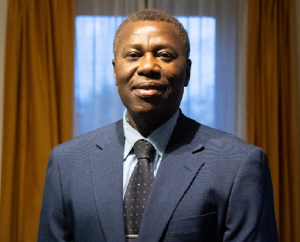The Ghana Airports Company Limited is seeking private capital to execute its Airport City II project, designed to enhance facilities at airport enclave and improve its non-aeronautical revenue.
The Airport City II project, to be sited on the southern side of the Kotoka International Airport, close to the Accra Polo Grounds, will consist of a mixed-use development of hotels, offices, multi-storey car park, and shops, among others.
Managing Director of the GACL, Charles Asare, told the B&FT that: “It is basically going to be real estate type of development. We are going to look for people who will partner us to bring in certain types of investment and services that are related to the airport space. We can talk of offices, hotels, car parks, and certain types of high-value low-weight manufacturing.
We have planned the place and a team will be put in place inviting private sector people who are interested in the project. Our intension in the partnership will be to contribute our land as our equity, and get partners who have appropriate technology, management, and capital to do it.”
The airports operator, following its recent closure of about US$400million loan facility on the back of its own balance sheet for its Terminal 3 and other projects, hopes the Public-Private Partnership (PPP) approach will help get the Airport City II project off the ground.
GACL secured a loan of US$250million from a consortium of banks led by Ecobank Capital to undertake the construction of a new terminal to be known as Terminal 3, at the Kotoka International Airport in August 2015.
The loan has a tenor of seven (7) years with a grace period of two years and interest rate of Libor plus a margin of 8 p.a.
The company also secured another US$150million facility from ABSA for the construction of the proposed Ho and WA airports. This facility has a tenor of 15 years, with a grace period of five years, and interest of Libor plus a margin of 5.5 per annum.
“Because of our existing credit facilities, we are very leveraged so the private sector partnership is the way to go. It may be PPP, or JVs,” Mr. Asare said on the sidelines of GACL’s Annual General Meeting held in Accra.
The success of the Airport City I project, is expected to stimulate private interest in the proposed Airport City II project.
The Airport City I project, which is now home to major architectural master pieces, is one of the most sought-after business districts in the capital. It is, indeed, a reflection of the quantum of foreign investment in Ghana’s real estate sector.
The Holiday Inn Hotel, SSNIT Emporium, the Marina Mall, Ibis Style Hotel, the Hilton Hotel, the National Communications Authority (NCA) building, Vodafone and UT towers, Silver Star Towers and the One Airport Square, and Nester Square, among others, are some of the major developments in the Airport City One enclave.
2015 financial performance
The company recorded a 4.3 percent decrease in its profit after tax, down from GH?184.9million in 2014 to GH?176.6million in 2015.
The reduction in profit was attributed to a drop-in aircraft movement and passenger throughput for the 2015 financial year.
The decrease in aircraft movement resulted from Egypt Air’s suspension of its Tuesday and Sunday flights and withdrawal of flight services between Accra and Abidjan; the temporal suspension of Asky Airlines’ Accra-Freetown service, and British Airways’ morning flights between Accra and London.
Passenger throughput also decreased by 8.1 percent; from about 2.4million in 2014 to about 2.2million in 2015.
Board Chairman, Tony Lithur, attributed the dip in passenger throughput to the imposition of a 17.5 percent Value Added Tax (VAT) on domestic airfare in 2015.
Mr. Lithur noted that board is speaking to the relevant authorities regarding the VAT issue, and that effforts are also underway to encourage private sector participation in domestic tourism to increase the current passenger numbers.
Business News of Thursday, 3 November 2016
Source: B&FT













